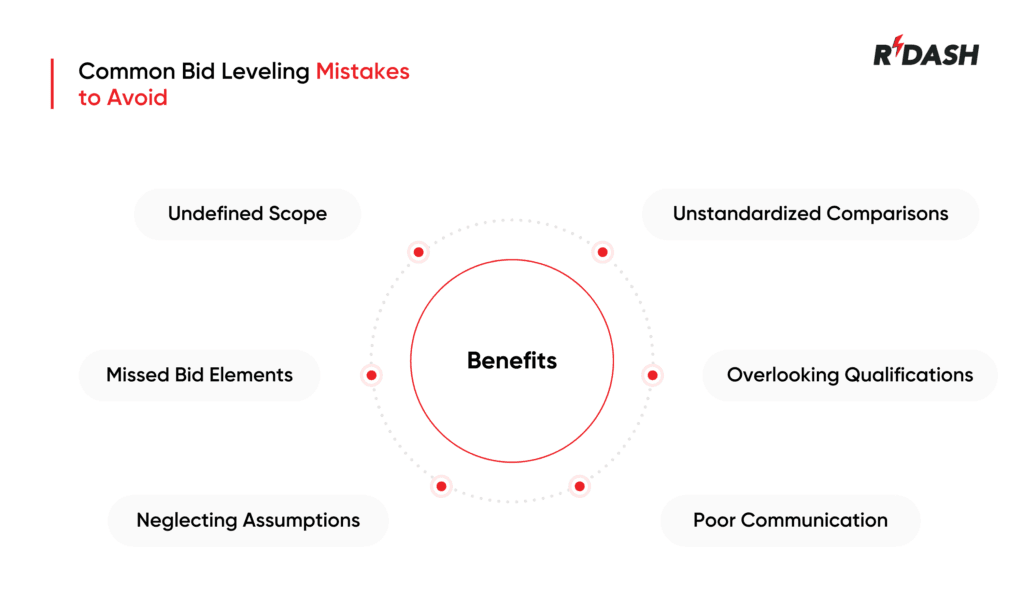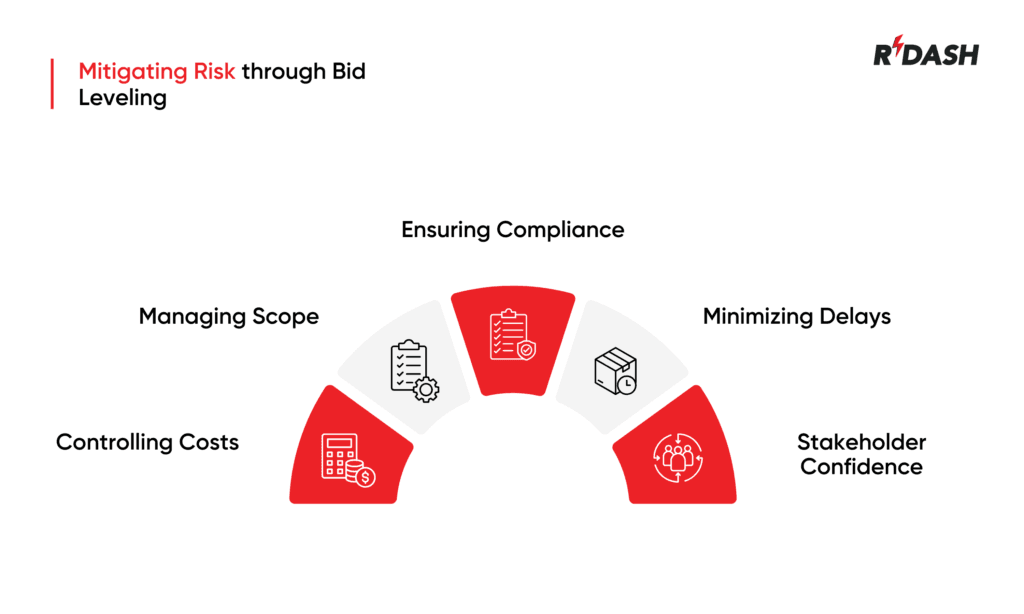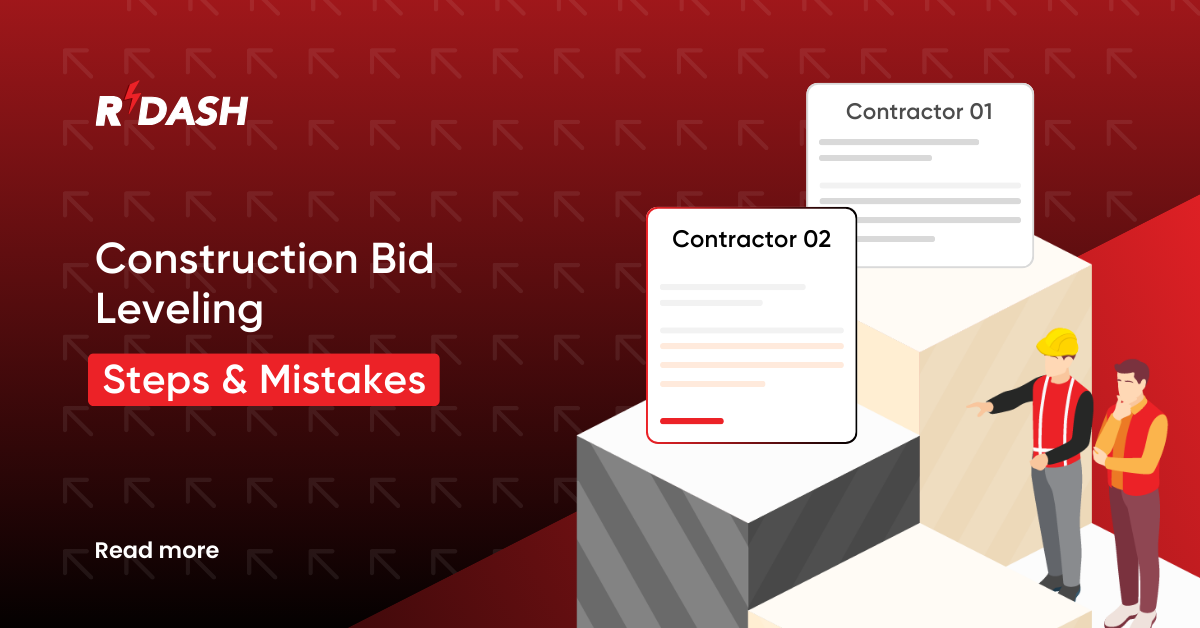What is construction bid leveling?
Construction bid leveling refers to a process of comparing and evaluating bids from several contractors or vendors to ensure that these bids are comparable and will satisfy the requirements of the project. It is essentially reviewing thoroughly submitted bids for inconsistencies, or variations in scope, price, or assumptions. In essence, leveling bids helps project owners or managers in making informed decisions so they can select the contractor or vendor that provides the best value for the project.
Bid leveling is not just the general look at the total cost. Rather, it involves breaking down the components of each bid so that all bids will match the same scope of work and standards. In other words, this means to ensure a fair comparison with no hidden costs or surprises on the construction site.
What is the purpose of bid leveling?
The main objective of bid leveling is to create a level playing field to evaluate a bid. It ensures all proposals are dealt with under the same level of examination, thus preventing confusion and bias resulting from inconsistency between how contractors or vendors present a bid. The key purpose of bid leveling is as follows:
Comparison
Projects typically cause the interpretation of the contract requirements to vary from contractor to contractor, and the different scopes and prices for bidding as a result. Bid levelling ensures that all these proposals are leveled to meet project specifics.
Hidden Costs
One may get a seemingly very low bid, but perhaps there are some hidden cost items therein. Bid levelling prevents some of these later on with increased costs.
Standardizing the evaluation process helps in promoting transparency and ensuring that all contractors are treated fairly. It builds trust and strengthens the relationship with the contractors.
Decision-Making
Bid leveling gives the project owner a clear and accurate picture of what each contractor or vendor is offering. This allows them to make data-driven decisions and choose the best fit for the project.
Project Risks
A weakly chosen bid will end up with either time or budget overruns or work that is less than desirable. Bid leveling avoids all of these risks because each bid is carefully considered.
Why bid leveling is important
Bid leveling helps control project cost, time, and quality. The main reasons why bid leveling is necessary are listed below.
Avoiding Cost Overruns:
Construction projects often run on tight budgets. Leveling of bids ensures that the project manager chooses a contractor whose bid is realistic and all-inclusive, hence reducing the chances of unanticipated costs.
Improving Project Productivity:
A leveled bid ensures that all contractors have a clear understanding of the project scope, which results in smooth running and fewer delays as a result of miscommunication or unclear expectations.
Quality Workmanship:
The selection of the contractor through the lowest price bid might compromise quality. The leveling of bids gives project managers an opportunity to compare the costs along with the contractor’s experience, materials, and methods. This will ensure quality standards are met.
Strengthening Stakeholder Confidence:
Transparency and fairness in the bidding process encourage confidence among stakeholders such as investors, clients, and contractors. It contributes to a positive reputation and long-term success.
Reducing Legal and Contractual Risks:
Overlooking discrepancies in bids can lead to disputes or legal issues during construction. Bid leveling helps identify and resolve any potential issues early, ensuring that the project is protected from unnecessary complications.
Some common mistakes to avoid when leveling bids include:
Bid leveling is a very important process in construction project management, but it can go wrong if not handled carefully. Avoiding common mistakes ensures accuracy, transparency, and successful project execution. Below are the most frequent pitfalls to watch out for:

Undefined Scope
Poor or ambiguous project scope can lead to significantly different interpretations in bids. Always provide detailed and comprehensive scope of work to contractors to ensure that their proposals are uniform.
Missed Bid Elements
Only looking at the overall cost without checking the breakdown on labor, materials, equipment, and other components can mean missing some hidden costs or differences. Every bid element should be scrutinized.
Neglecting Assumptions
Most bidders include assumptions and exclusions in their quote. Neglecting these causes mismatched expectations and sometimes unseen costs at the project sites.
Unstandardized Comparisons
In the absence of standardization, an improper basis for comparison creeps in. Compare bids based on standardized methodology.
Overlooking Qualifications
Selecting a contractor based on a low price may compromise on quality and increase risks. Always evaluate the experience and expertise of the contractor along with his past performance in relation to the bid.
Poor Communication
Miscommunication with bidders about the expectations of a project or clarifications during leveling can lead to incomplete and inaccurate proposals. Keep clear communication and consistent.
Steps in the bid leveling process
A structured approach to bid leveling ensures accuracy and fairness in contractor selection. Below are the steps involved in the process:
Define Project Scope and Requirements:
Start by developing a detailed scope of work that clearly outlines all the requirements of the project, including deliverables, timelines, and standards. This will be the basis for judging the bids.
Solicit Comparable Bids:
Share the project details with prequalified contractors and vendors so that they get an accurate idea of the requirements. Encourage them to ask any questions in case of ambiguities.
Analyzing and Breaking Down Bids:
Each bid is to be analyzed thoroughly by breaking it into its constituent parts such as labor, material, equipment, overheads, and profit margins. Check for any omissions or inconsistencies.
Standardizing the Comparison Format:
Standardize the comparison of bids through a leveling sheet or matrix. Ensure that all critical elements are included, such as cost breakdown, assumptions, exclusions, and project timelines.
Clarify Discrepancies:
Contact contractors to clarify any unclear or conflicting information in their bids. This step ensures that all proposals are aligned with the project’s requirements.
Evaluate Contractor Qualifications:
Compare and analyze each contractor’s experience, references, financial stability, and compliance with licensing and insurance requirements to ensure the contractor is capable of delivering the project.
Finalize and Select the Best Bid:
After thorough analysis and leveling, select the bid offering the best value-not necessarily the lowest cost. Ensure that the selected contractor aligns with the priorities and standards set for the project.
Reducing risks through effective bid leveling.
An effective bid leveling ensures that construction projects have an effective means of reducing their risks. Project managers who standardize and vet thoroughly the bids reduce the scope of problems to be expected at project execution. Below are the ways bid leveling prevents risks.

Controlling Costs
Bid level helps one discover hidden costs, omissions, and unrealistic prices when done. A selected bid does not become a cause for financial shock later on during the implementation of the project. End Evaluating bids beyond just cost allows project managers to consider the quality of materials, methods, and contractor expertise, which reduces the risk of substandard work.
Managing Scope
A leveled bid ensures all contractors are quoting for the same scope of work. This clarity reduces misunderstandings and the likelihood of scope creep during the project.
Ensuring Compliance
Project managers can, therefore, prevent potential contractual disputes before they arise by examining exclusions and assumptions in bids.
Minimizing Delays
A well-screened contractor with realistic timelines and clear expectations reduces delays resulting from poor planning or miscommunication.
Stakeholder Confidence
A transparent and detailed process of bid leveling creates confidence with stakeholders, including clients, investors, and contractors. Such confidence can lead to better collaboration and fewer disputes.
Conclusion
Bid leveling is a fundamental process that ensures construction projects are executed both efficiently, on time, and within budget. For example, avoiding common mistakes in the process, maintaining it as a structured exercise, and using it to minimize risks can set project managers up for successful project delivery. Effective bid leveling serves as a protection against financial as well as quality issues. The process also encourages more openness and collaboration, which gives an opportunity for long-term success in construction management.






